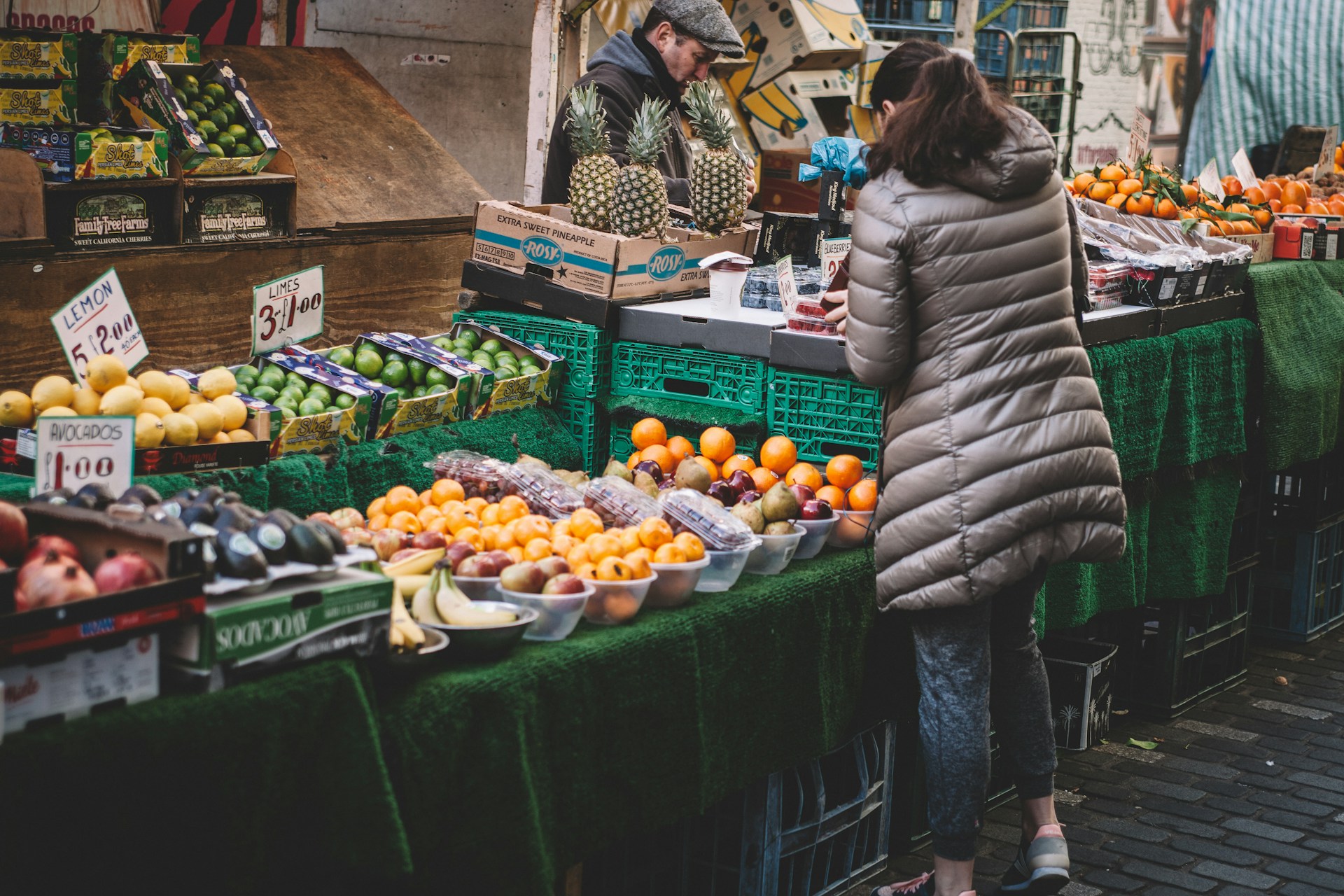Maintaining a steady supply of fresh produce in retail can be quite challenging, especially due to the sensitive nature of these products.
Regardless, reliable supply is crucial to avoid stock-outs, waste, and consequently, keep customers satisfied.
Various strategies can help achieve this.
While no one-size-fits-all solution exists, several tried-and-tested approaches prove effective.
This piece will delve into these methods, aimed at providing retailers with practical insights.
It serves as a comprehensive guide to ensure consistent and quality produce availability at all times.
Contents
- Techniques For Ensuring Consistent Produce Supply In Retail
- 1. Establish long-term contracts with reliable farmers
- 2. Invest in Environmentally Controlled Storage Facilities
- 3. Ensure Proper Post-Harvest Handling Procedures
- 4. Utilize Advanced Forecasting and Inventory Tools
- 5. Develop diversified sourcing strategies with suppliers.
- 6. Monitor Quality Regularly For Consistency
- 7. Encourage Local, Seasonal Buying
- The Bottom Line
Techniques For Ensuring Consistent Produce Supply In Retail
1. Establish long-term contracts with reliable farmers
Engaging in long-term commitments with reliable farmers promises a more consistent supply of produce to retail businesses.
Having a long-term contract in place provides both the retailer and the farmer with a sense of security and predictability in their business relationship.
These contracts can take on various forms, but essentially, they create a binding agreement that the farmer will supply the retailer with a certain quantity of produce over a specified period.
This allows the retailer to plan for sales and promotions knowing that they have a guaranteed supply of produce.
Long-term contracts not only secure a steady flow of produce but also contribute to the maintenance of quality consistency.
A farmer aware of a long-term commitment would be inclined to give considerable focus to maintaining the quality and freshness of the produce they are growing.
With a clear understanding of the expectations from the retailer, farmers can better plan their cultivation strategies.
Additionally, in these contracts, retailers can specify standards for farming practices that can ensure the consistency of the produce.
For instance, requirements regarding the use of manure, fertilizers, and pesticides can be stated clearly in the contract.
The benefits of these contracts also extend to the farmers.
This not only earns them a predictable revenue stream, but also might make them eligible for bank loans or government subsidies that require proof of income assurance.
As such, entering into long-term contracts with reliable farmers provides a realistic and practical strategy for retailers to ensure a consistent supply of good quality produce.
It creates a system that is beneficial not only for the retail businesses and farmers but also for the consumers who rely on the retailers for their daily essentials.
Establishing trust and open communication between the two parties involved in the contract is crucial for this strategy to work.
In this dynamic, both parties will need to voice any concerns or ideas they might have and work together to develop solutions.
There are many benefits to establishing long-term contracts with reliable farmers, but a deep understanding of the farmers’ process, the quality of their produce, as well as their ability to deliver is essential before entering such agreements.
Overall, long-term contracts with reliable farmers present a tangible solution to the retail sector’s pressing problem of ensuring consistent supply and quality of produce.
2. Invest in Environmentally Controlled Storage Facilities
When discussing Techniques for Ensuring Consistent Produce Supply in Retail, one must not overlook the importance of investing in environmentally controlled storage facilities.
This approach is much more than a mere business investment; it is a strategic decision contributing to the sustainability and stability of the retail produce supply chain.
With climate change fundamentally disrupting weather patterns, businesses are now more unpredictable than ever.
However, with specifically designed storage facilities, retailers can gain an edge through their ability to control not just temperature, but humidity and lighting conditions as well.
Investing in environmentally controlled storage facilities is a pivotal step in providing consistently high-quality produce by accommodating the unique storage conditions each type provides.
This development allows for a healthier product, as maintaining optimal environmental conditions can significantly reduce the onset of diseases and prolong shelf life.
Also, such facilities are capable of hosting a broad range of produce varieties, catering to consumer demand for diversity.
However, this investment is not just for immediate benefits.
As global regulations on reducing CO2 emissions tighten, these facilities have the potential to be more energy-efficient than traditional storage methods, adding to their long-term value proposition.
Furthermore, they provide the capacity to maintain consistent supply levels even during off-season.
By controlling the environment, produce typically only available during specific growth seasons can be stored for more extended periods, ensuring a year-round supply.
This aspect significantly improves a retailer’s resilience factor, as the dependency on external factors such as weather or transport availability is drastically reduced.
Another often overlooked advantage is the reduced need for chemical preservation methods.
When produce is stored in optimal conditions, it maintains its freshness and nutritional values better, offering clients healthier choices and contributing to the overall appeal of the business.
Surely, there are costs associated with the implementation and maintenance of such storage facilities.
Yet, when weighing these against the financial losses incurred through produce wastage, and the potential revenue gain from a diversified and constant product offering, the expenses are justified.
Therefore, given the compelling benefits, retailers serious about ensuring a consistent produce supply must consider investing in environmentally controlled storage facilities as a priority.
3. Ensure Proper Post-Harvest Handling Procedures
Regulating post-harvest handling practices is a critical facet of maintaining a consistent produce supply within the retail sphere.
It entails everything from the immediate treatment of the products directly after harvest, to preparing them for long-term storage.
This stage is instrumental in dictating the overall quality of the products and directly impacts their shelf-life and consumer appeal.
The improper handling of products during this stage can lead to premature spoilage and overall product deterioration.
By enacting thorough and careful post-harvest handling and care, retailers are able to ensure that produce is of the highest quality when it hits the shelves, leading to higher consumer satisfaction and repeat business.
Moreover, customers are then likely to trust the retailer’s offering more and become regular purchasers.
There are a few handling procedures that can be employed post-harvest to maintain this high degree of quality.
For instance, proper cooling techniques are paramount, as they aid in slowing down the rate of deterioration and prolong the shelf-life of the products.
To achieve this, products can be placed in cool rooms immediately after harvest to help reduce field heat and increase their longevity.
It’s also important to preclude any potential damage from pests or diseases during storage.
Routinely spraying products with acceptable pest and disease control products can help mitigate these risks.
In addition to this, retailers should ensure that produce is handled with care during the manual stages of harvesting, packing, and transporting.
Any unnecessary rough handling can lead to injuries in the products, making them more susceptible to decay or disease.
By prioritizing appropriate post-harvest procedures, retailers can optimize the quality of their produce, control waste, and boost their customer’s overall satisfaction.
As a retail business, your primary goal is to always provide your customers with high-quality, fresh produce.
Ensuring proper post-harvest handling procedures can remarkably impact your ability to fulfill this promise consistently.
4. Utilize Advanced Forecasting and Inventory Tools
In the context of ensuring consistent supply of produce in retail, one cannot ignore the importance of utilizing advanced forecasting and inventory tools.
These tools provide significant support to decision-making processes, offering valuable insights into consumption patterns and demand trends.
With accurate predictive analysis, retail businesses can estimate the quantity of fresh produce that their customers are likely to purchase in a given timeframe.
This, in turn, helps them decide the amount of produce to source from farmers or suppliers.
In the absence of advanced forecasting tools, the risk of overstocking or understocking perishable products is substantial, leading to either food waste or unsatisfied customers.
By leveraging sophisticated forecasting tools, coupled with efficient inventory management systems, retailers can balance demand and supply efficiently, thus ensuring the consistent availability of fresh produce.
With integrated inventory management systems, realtime tracking of the available stock becomes a possibility, which keeps the retailers aware of their inventory levels at all times.
These systems can provide alerts for restocking, which helps in avoiding stock-outs and loss of sales.
On the other hand, these tools also warn against overstocking, thus reducing the inclination towards unnecessary procurement.
It is important to note that the advanced forecasting and inventory tools should be tailored to the retail business’s specific needs in order to offer maximum value.
Moreover, these tools should be designed keeping in mind the perishable nature of fresh produce, the variation in demand due to seasonality and the necessity of sourcing from various farmers or suppliers.
By integrating data from various sources such as sales records, customer preference surveys, market trends and weather forecasts, these tools can offer a comprehensive view of demand projection.
Another dimension added by these tools is the prediction of the shelf-life of the produce, which can greatly assist in designing the procurement and display strategies.
However, the effectiveness of these tools greatly depends on the accuracy and timeliness of the data fed into them.
Hence, active involvement of the management, regular training of the staff and a constant endeavour to improve and update the tools are vital for reaping the maximum benefits.
In a nutshell, the successful adoption and implementation of advanced forecasting and inventory tools can go a long way in ensuring the consistency of produce supply in retail.
5. Develop diversified sourcing strategies with suppliers.
The process of ensuring a consistent supply of produce in your retail business requires the implementation of diversified sourcing strategies.
Sourcing from multiple suppliers not only reduces your business’ exposure to risk, but also insulates your operations from supply shocks that may arise from events such as poor harvest seasons, environmental catastrophes, or political disruptions in the source markets.
The primary goal of diversifying suppliers is to provide the retail business with a cushion to weather out supply interruptions.
Diversification of sourcing strategies requires the identification of different geographical regions and suppliers that can provide the same produce.
Establishing relationships with these sources and creating strong networks can help in ensuring that supply is consistent.
A variety of sourcing methods can be employed for this purpose, including direct sourcing, indirect sourcing, and third-party sourcing.
Diversified sourcing strategies ensure a consistent supply chain, insulates your business from supply shocks and promotes resilience in operations.
Each of these practices comes with their advantages and it is paramount that you research each thoroughly to determine the best fit for your business and the specific produce you deal with.
Reputable suppliers understand the importance of developing sustainable sourcing practices and they can guide you in identifying responsible sourcing strategies that align with your business model.
An important aspect in the development of diversified sourcing strategies is the analysis of the supplier’s market power.
Depending on the timescale of engagement with suppliers, it’s essential to establish beneficial partnerships with suppliers who appreciate long-term relationships.
This approach facilitates mutual understanding, build trust, and create a context for win-win negotiation strategies that benefit both parties.
By creating a diversified sourcing strategy, your business takes a proactive role in managing supply risks, rather than a reactive one, addressing issues only after they occur.
Therefore, a diversified sourcing strategy proves to be an important technique in ensuring a consistent supply of produce in retail, as it provides an additional layer of protection against unforeseen circumstances.
Moreover, it also ensures that you offer the best quality products to your customers, which in turn, strengthens your brand’s reputation and customer loyalty.
By effectively implementing a diversified sourcing strategy with your suppliers, your retail business can function smoothly, ensuring a steady flow of produce and thereby maintaining customer satisfaction.
6. Monitor Quality Regularly For Consistency
Maintaining consistent product quality across the entire supply chain is one of the most robust methods to assure a continuous produce supply in retail. Monitoring quality routinely is vital to achieving this.
There are several ways in which a retail establishment can monitor the quality of their produce. Implementing regular checks at various stages of the supply chain can ensure that the produce is always of the highest quality.
One effective method is conducting regular on-site inspections with the suppliers. This step can ensure that the produce growing and harvesting practices align with the required quality and safety standards. Regular interaction can also help in maintaining open communication with your suppliers, enabling you to address any potential quality issues promptly.
An essential part of quality monitoring involves continuously training employees on safety and quality standards. It is vital to ensure that everyone involved in handling the produce understands the importance of maintaining its quality.
Another effective method of monitoring quality is through third-party audits and certifications. Certifications from food safety organizations can provide assurance that the produce meets defined quality and safety standards, giving your customers confidence in your products.
It is also crucial to continuously monitor consumer feedback. Their experience with your produce significantly influences your brand’s reputation. Consumers’ feedback can be a valuable tool in identifying any inconsistencies in the quality of your produce.
Technological advancements also offer numerous possibilities for quality monitoring. Advanced tools and technologies can facilitate real-time monitoring, ensuring instant intervention should a potential quality issue is detected.
Another key aspect of quality monitoring in retail supply is consistency during transportation. It involves ensuring the right temperature control, proper packaging, and careful handling of produce during transit.
Lastly, it is important to instill a culture of quality within your organization. A shared focus on maintaining the integrity of quality standards can significantly contribute to your efforts in monitoring and improving product quality consistently.
Measuring and tracking the quality consistency over time can also provide valuable insights into any seasonal or supplier-related variability in quality. Retailers can then take corrective actions or make necessary adjustments in their supply chain.
To summarize, monitoring quality regularly lies at the heart of ensuring a consistent produce supply in retail. It involves implementing checks at various stages of the supply chain, using technology to detect potential issues, relying on third-party audits, and leveraging consumer feedback.
Continuous focus on quality can help a retailer build trust with their customers, ultimately leading to loyalty and repeat business. Being consistent with product quality would also enable retailers to stand out in an increasingly competitive market.
While it may require setting up systems, training employees, and investing in tools, the benefits of ensuring the consistent quality of produce are immense. Therefore, it’s one of the top priorities that need to be addressed by every retailer aiming for long-term success in the produce market.
7. Encourage Local, Seasonal Buying
Encouraging local, seasonal buying can be a key technique for ensuring consistent supply of quality produce in retail.
By supporting local farmers, retailers can establish strong working relationships which in turn favours consistent supply.
Moreover, locally grown produce tend to be fresher since they don’t have to travel long distances from their place of origin.
In addition, local and seasonal produce often provides unique flavours and textures that are hugely appealing to many consumers.
This can not only boost sales but also promote the varied selection of produce available in your retail store.
Apart from ensuring a steady supply, encouraging local buying also boosts the local economy.
Fresh produce from local farmers not only guarantees consistency in supply but significantly reduces the carbon footprint related to long-haul transport.
This environmentally friendly aspect is important considering the growing trend where consumers are becoming more conscious about sustainable practices.
It is also worth mentioning that locally grown produce is often associated with supporting fair trade practices.
Furthermore, buying in line with the season ensures the availability of a wide range of fruits and vegetables.
This not only maintains a varied product range but also encourages customers to try out different recipes by buying what’s in season.
Moreover, seasonal buying ensures that the store has a range of fresh produce all year round.
It also reduces the risk of overdependence on certain produce which may be affected by uncontrollable factors like weather changes.
By promoting local, seasonal buying, retailers are not only securing their supply chain, but are also contributing positively towards the economy and the environment.
In this regard, retailers should continuously engage their consumers on the importance and benefits of purchasing local, seasonal produce.
Through this simplified supply chain, retailers are in a better position to control the quality and quantity of the produce, thus ensuring their consumers always have access to the freshest products.
The Bottom Line
Successfully managing the supply chain in agriculture is a multi-tiered process involving strategic partnerships, technological advancements, and sound practices.
Forming long-term collaborations with reliable farmers assures fallback options during pressing times.
Investment in environmentally controlled storage facilities ensures protection against weather vagaries.
Stringent post-harvest handling procedures play a critical role in reducing potential losses.
Leveraging modern forecasting and inventory tools can optimize resources, enhancing efficiency and profitability.
Furthermore, diversifying sourcing strategies mitigates risk and increases overall supply chain resilience.
Regular quality checks exercise is an integral part of maintaining the brand’s credibility.
Finally, promoting local and seasonal buying significantly reduces environmental footprint and supports local economies.
Engaging in these strategies can result in a more sustainable, efficient, and resilient agricultural supply chain.




